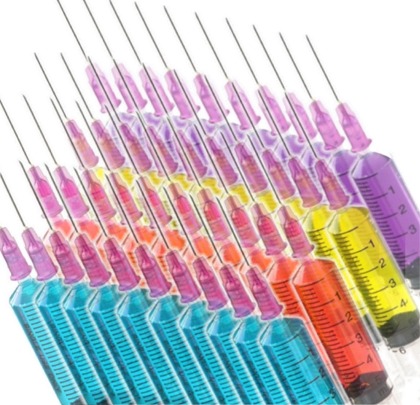Conventional Med
How Perfectly Healthy People Are Turned into Patients
Medical screening over-promises and under-delivers—dragging people with no health problems into the medical system.
by Alan Cassels, Evidence Network
What could possibly be wrong with having a mammogram? Or a PSA test for prostate cancer? Even a full body CT scan? Finding the signs of illness before it strikes you down is always the best course of action – isn’t it?
You might have similar thoughts when offered a routine screening test, ultimately believing that screening for illness before it happens can only do good. So, you may be in for a shock, as I was, when I discovered how often medical screening has overpromised and under-delivered, And how frequently the “screen early, screen often” paradigm – including even simple blood tests to check for high cholesterol – can rapidly turn perfectly healthy people into patients.
Unnecessary care can be bad for your health.
Some medical screening, such as early testing for colon or cervical cancer, has a long lineage of strong evidence that it can save lives. Others, not so much.
The poster child for inappropriate and harmful screening is probably the full body CT scan, which is routinely promoted with a ‘better safe than sorry’ message that is compelling, but is not supported by either independent experts or good science.
Here’s what not advertised: a full-body scan is pretty much guaranteed to find some kind of abnormality that likely won’t hurt you.
In a study published in Radiology, 86 per cent of patients of 1,000 symptom-free people who underwent full body CT scans had an abnormality detected. The average person had 2.8 abnormalities revealed by the CT scan – items which appeared unusual, but either disappeared on their own or were so slow-growing that they never went on to threaten the individual.
Even for screening programs that are well-studied, such as those for breast or prostate cancers, the chances of being saved by the test are often outweighed by the possibility that the individual will be hurt by the testing or possible treatments which follow.
Yet, since most of us know someone whose life has been ‘saved’ by a test, we submit.
The PSA test, which screens a man’s blood looking for risks of prostate cancer, might seem like a no brainer for many men, especially those who have lost brothers or a father to the disease. But what most of us aren’t going to hear is that when an individual has a high PSA score (which could be caused by many things), the doctor can’t tell if the patient has the slow growing-type of prostate cancer that the majority of men eventually get (and won’t die from), or the fast-growing type that can be quickly lethal.
Here’s the data, taken from a study published in the New England Journal of Medicine: to save a single man dying from prostate cancer, 1,410 men need to be screened, and of those, 48 will undergo treatment (with chemotherapy, surgery or drugs). About 30 of the treated men will end up impotent or incontinent (a possible consequence of the treatment).
Screening can be a terribly difficult and emotional decision because many of us don’t think in terms of numbers like these. Medical screening falls under the spell of the “popularity paradox” where, despite high levels of false positives for many tests (common in breast, lung and prostate cancer screening especially), people still rally behind them. We ask our friends and relatives to help raise money for ‘the cure’ and are cheerleaders for the message of early detection.
In the world of breast cancer screening, many of us know a woman who has dealt successfully with the disease, and are led to believe that early screening saved a life. The truth is that some women, even with screening, will die. And many women, without screening, will be treated successfully. What’s often not factored into the decision-making process is the potential harm incurred from the many false positives, the subsequent radiation from repeated testing, and the pain and suffering from potential biopsies and treatment.
One of the most common side effects of medical screening – the wrenching psychological impact of telling someone they may have cancer when they don’t – is rarely taken into account. And it’s significant.
The latest research for breast cancer screening, from the Canadian Task Force on Preventive Health Care, says that you’d have to give mammograms to 2,100 women aged 40 to 49 every two years for 11 years to save one life. In the interim, screening will result in almost 700 false positives (think more testing, more x-rays and investigations) and about 75 women will have an unnecessary biopsy.
Informed decision-making the best medicine.
Early screening on its own, without the evidence to back up its usefulness in saving or improving lives, is not only costly to our public health system, but may actually cause patient harm.
The principle here is that even when saving a life by screening seems the intuitive and right thing to do, it’s not a deal you should ever enter into without understanding the probabilities first – your chances of being helped or hurt by the test. Talk to your health provider, and always ask for the evidence.
Alan Cassels is an expert advisor with EvidenceNetwork.ca, and a researcher at the University of Victoria. His new book, Seeking Sickness: Medical Screening and the Misguided Hunt for Disease (Greystone Books) will be released this month.
Originally published on Troy Media
Graphic by JSCreationzs on FreeDigitalPhotos
Tagged alan cassels unnecessary care, big pharma, conventional medicine, healthy patients, modern medicine, pharmaceutical drugs, pharmaceuticals, unnecessary medical screening, unnecessary medical testing
Related Posts
-
http://behindthelockeddoors.wordpress.com/ Anne C Woodlen
















